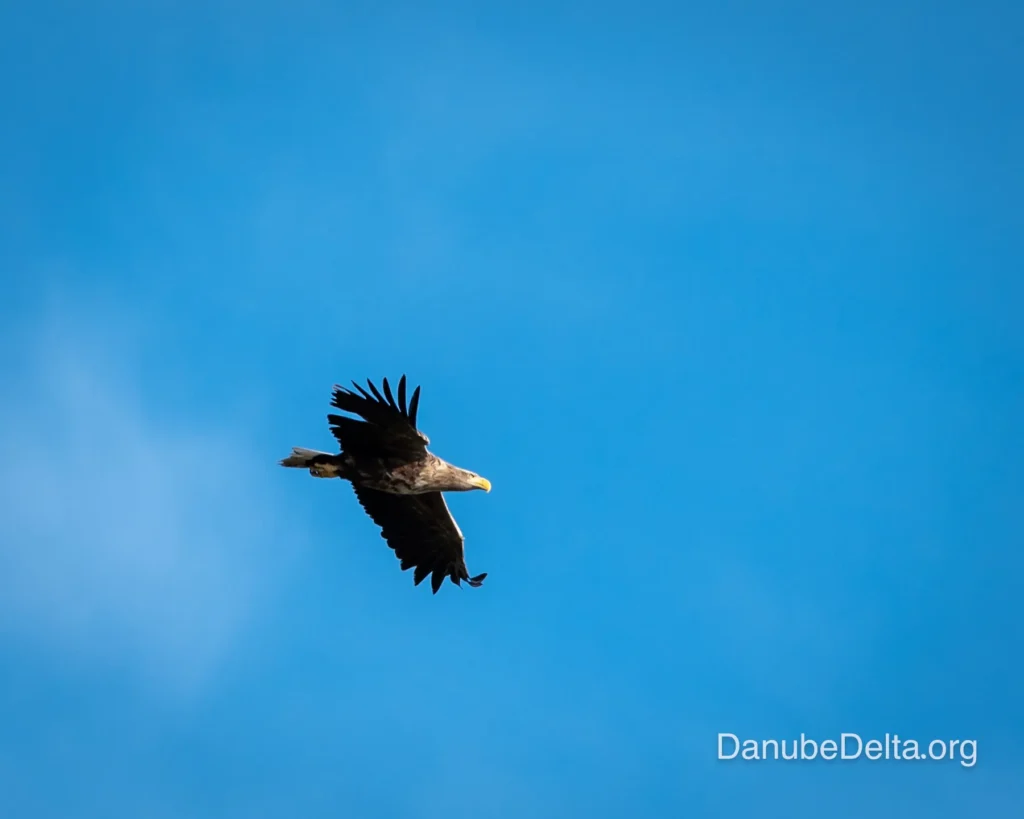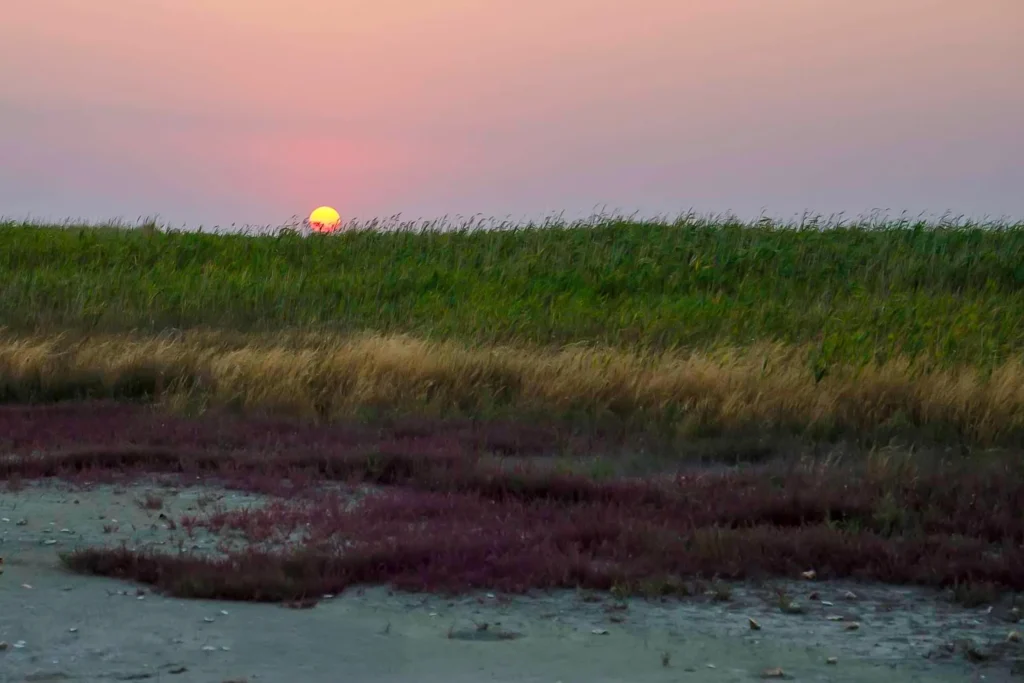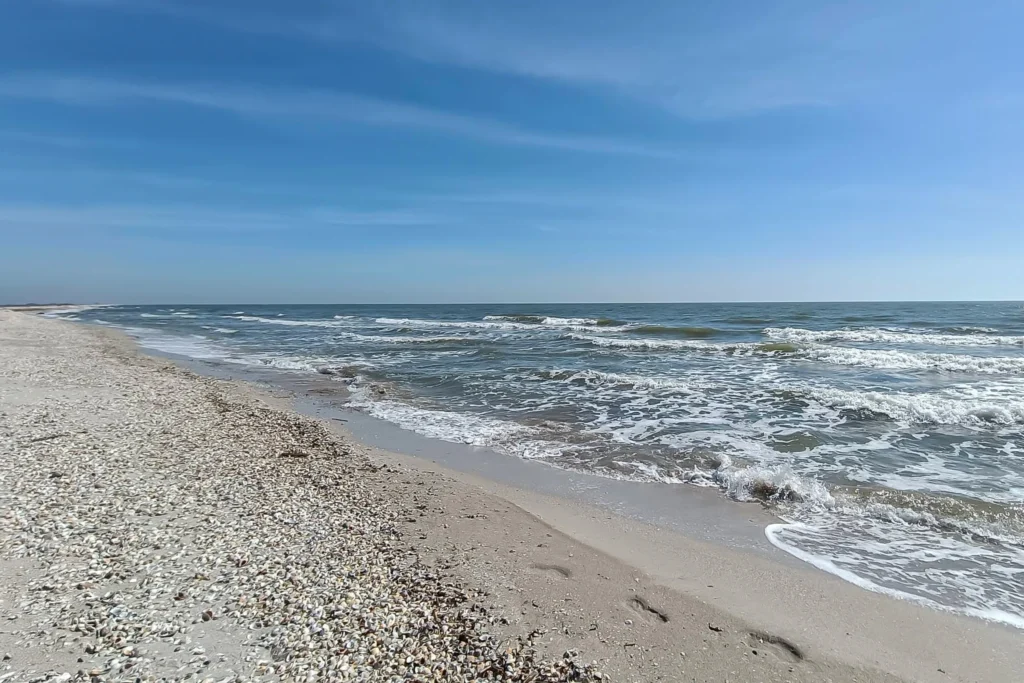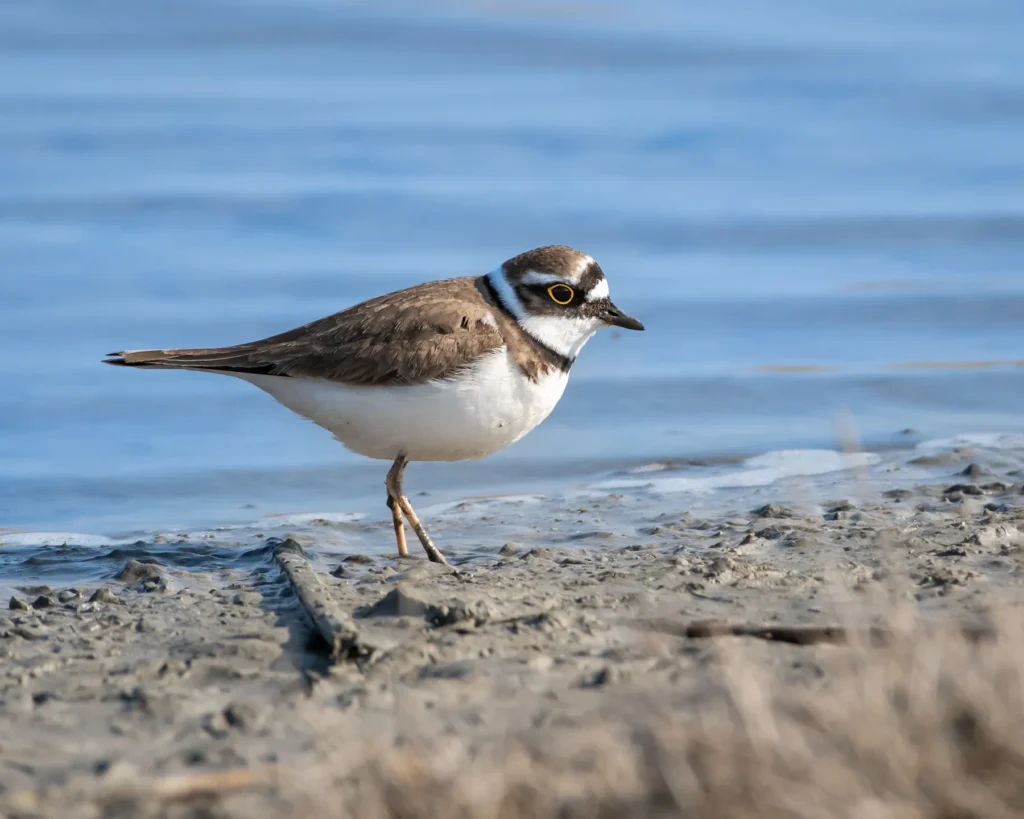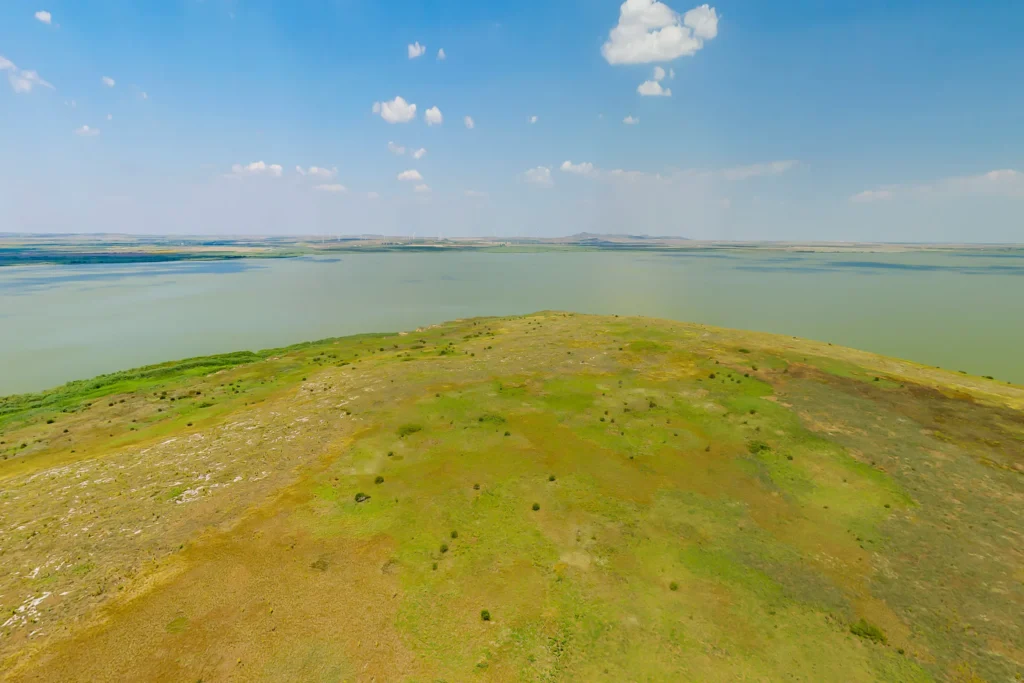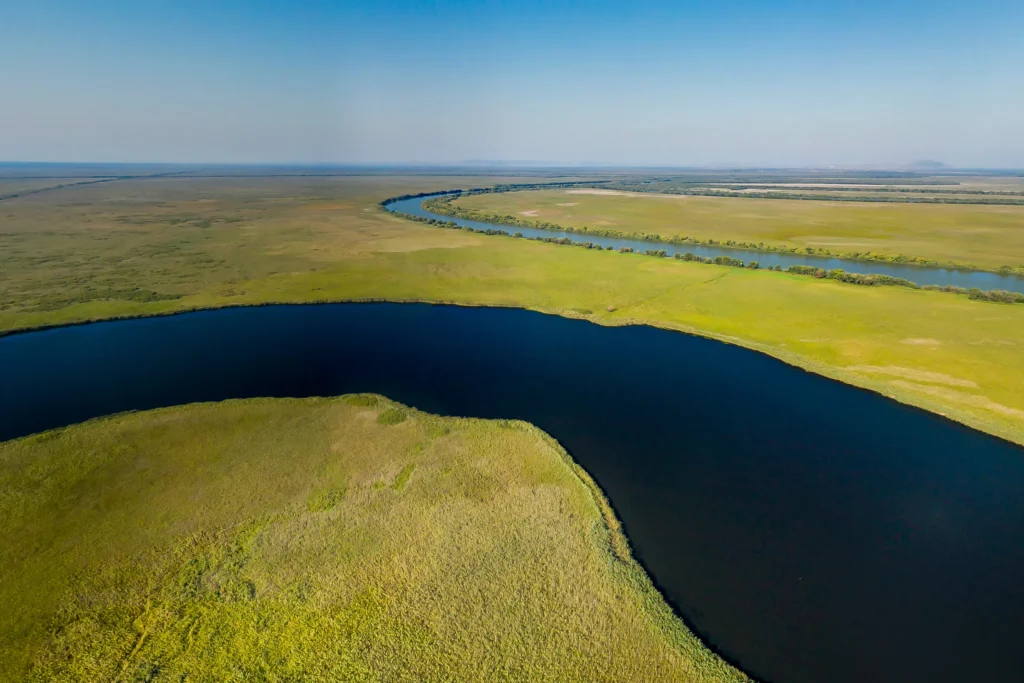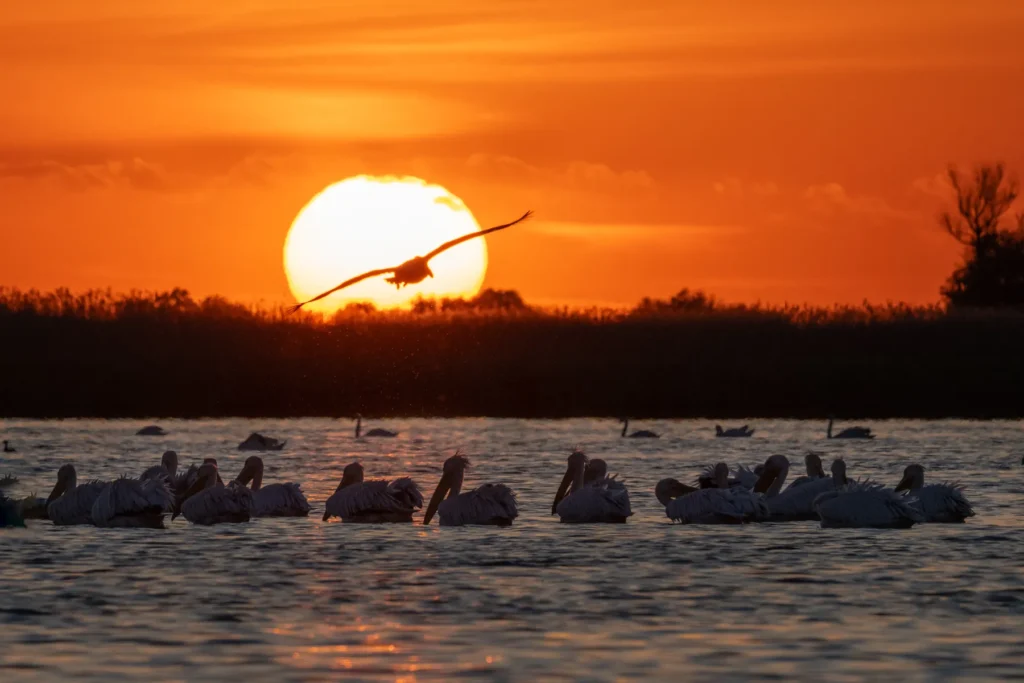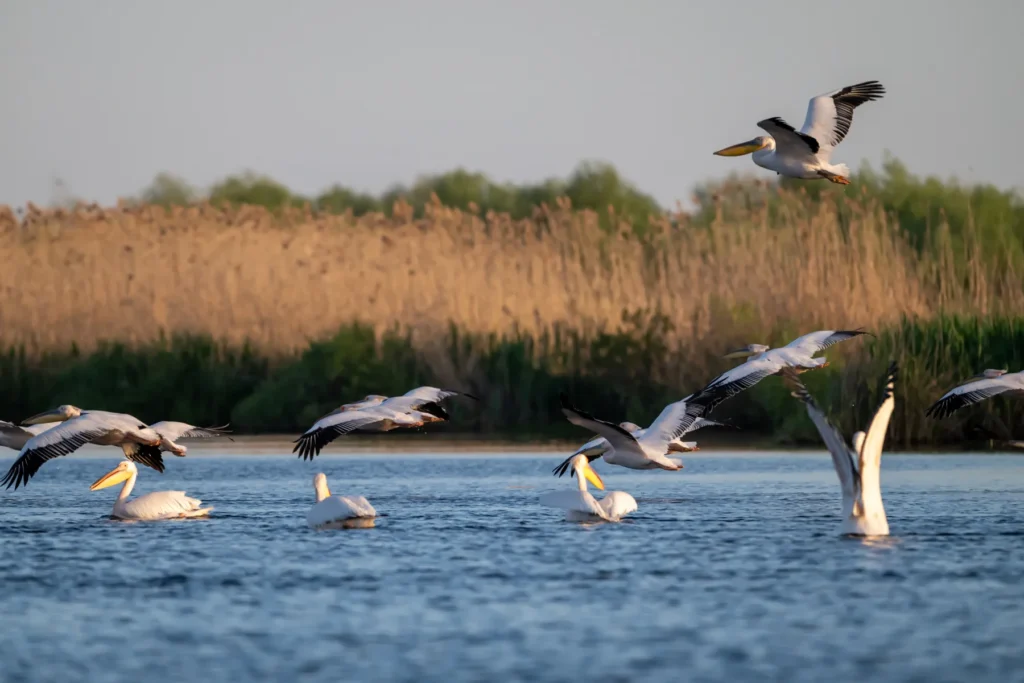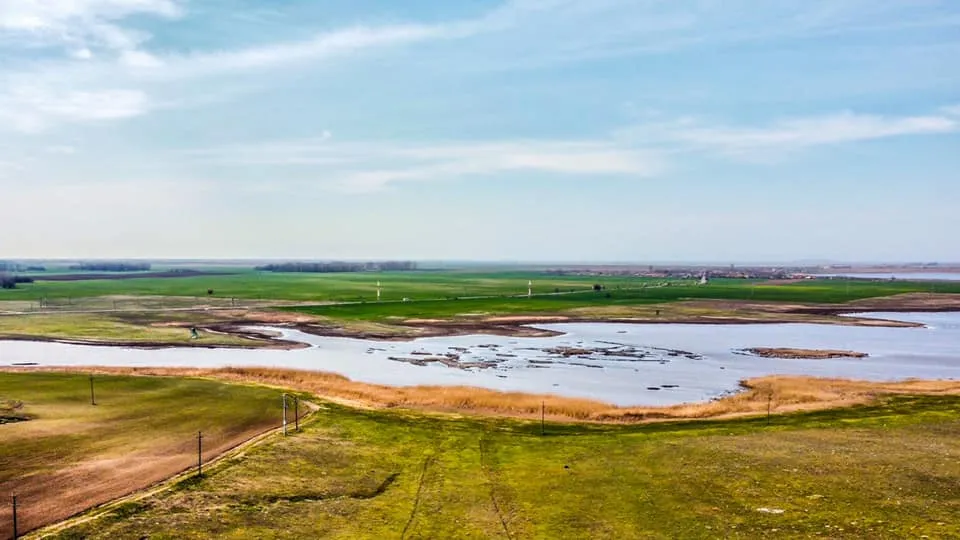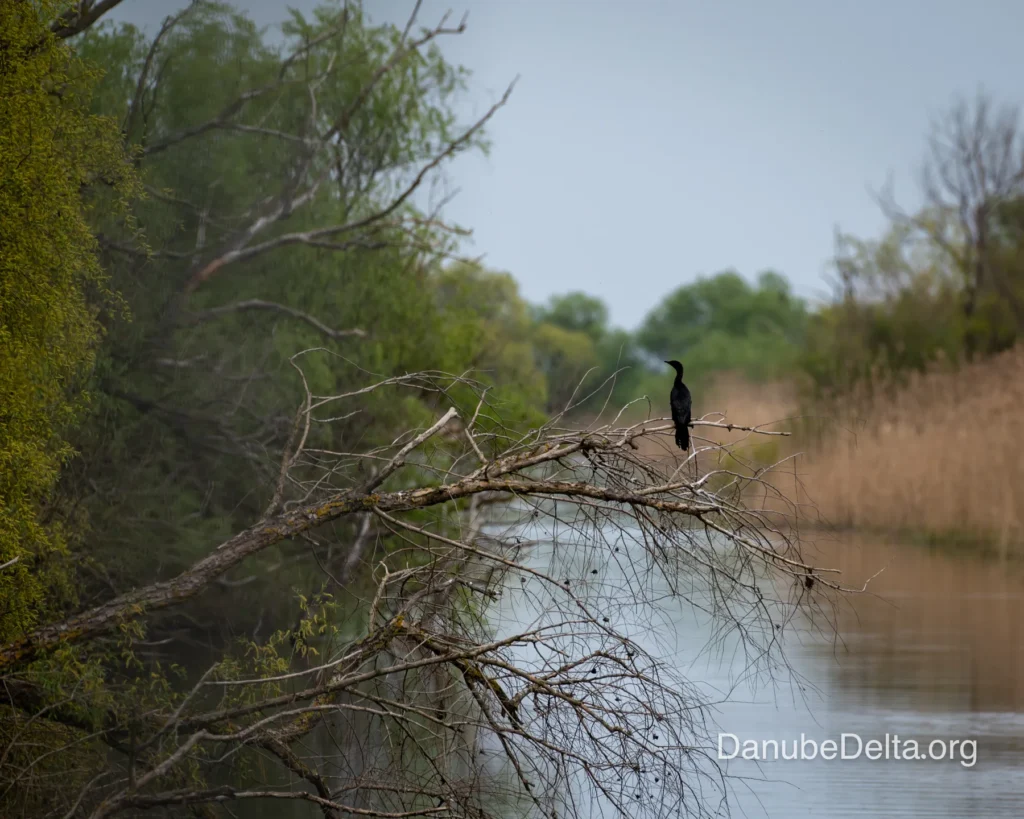Periteașca - Leahova, a strictly protected area in the Danube Delta
Periteașca - Leahova - Danube Delta
Peritheasca-Leahova: an Ecosystem in Perpetual Dynamics
An Oasis of Biodiversity at the Intersection of Marine and Continental Waters
The Periteașca-Leahova Protected Area is an ecosystem of remarkable complexity, situated in the heart of the Danube Delta Biosphere Reserve (DDBBR), characterised by its unique geographical position, being a point of confluence and transition between the freshwaters of the Razim-Sinoe lagoon complex and the saline waters of the Black Sea. Located on the administrative territory of the municipalities of Jurilovca and Murighiol, the area is a mosaic of sandy sandstone and shallow lakes. Historically, its ecological value was recognised early on, but its legal status as a protected area of national interest, corresponding to category I-a IUCN (strict nature reserve), was formalised by Law No. 5 of 6 March 2000. This legislative decision enshrined the need to protect a unique landscape, where natural phenomena, rare species and ecological processes intertwine in a fascinating way, creating an ideal environment for study and conservation. Its precise demarcation, established by legislation, reflects the attention paid to maintaining the integrity of this vital ecosystem.
Legal Status and Management Framework of the Reserve
The Periteașca-Leahova Complex has a clear legal status, which emphasises its special importance within the Danube Delta Biosphere Reserve. The area is a strict avifaunal nature reserve, classified in Category I-a IUCN. This means that the area is intended exclusively for biodiversity conservation and scientific study, with extremely limited human activities. It covers a total area of 4,125 hectares, a considerable expanse that includes a complex of lakes, ponds and ponds.
The administration of this area is the responsibility of the Administration of the Danube Delta Biosphere Reserve (ARBDD), a public institution with legal personality subordinated to the Ministry of Environment. According to the Government Decision No 248/1994, the ARBDD has wide-ranging tasks, from the adoption of concrete measures for the conservation of ecosystems and the marking of integral protection areas, to the identification of ways to capitalise on the results of scientific research. The existence of precise regulations on access and activities within the reserve is proof of the importance the authorities attach to its protection.
The geographical demarcation of the area is accurately described in official documents such as Annex 1 to HG 248/1994. It is bordered to the north-east by the Periteașca Channel, between the Black Sea and Lake Razim. To the north, the boundary is Lake Razim, and to the west it is bordered by Lake Golovitsa. To the south and south-east, the area is bounded by the Portița Gorge and the Black Sea shore. This geographical configuration is not accidental; it is a direct consequence of the hydrological dynamics of the Delta. The closure of the connection with the Black Sea at Gura Portiței has led to a decrease in water salinity in the lakes in the area, a process of water softening which directly influences the evolution of biodiversity and habitat types. Such a hydrological change, from a brackish to a fresher environment, alters the existing ecological balance, requiring plant and animal species sensitive to salinity variations to adapt or retreat.
Table 1: Nature Reserve Periteașca-Leahova Complex - Summary characteristics
| Feature | Details |
| Legal status | Strict Nature Reserve (IUCN Category Ia) |
| Surface | 4.125 ha |
| Localisation | The Razim-Sinoe lagoon complex, on the territory of Jurilovca and Murighiol municipalities |
| Main legal framework | Law No 5 of 6 March 2000 |
Geographical, Hydrological and Geological Features
The landscape of Periteașca-Leahova is a complex mosaic of landforms and aquatic habitats, modelled by the interaction of river alluvium and sea action. Morphologically, the area is dominated by relatively young sandy sandstones that run parallel to the sea shore, creating a succession of islands and depressions. The main lakes in the complex are Leahova Mare, Leahova Mica, Periteașca, Pahane and Coșna.
The hydrology of the area is a defining aspect of its ecological identity. As a result of the dyking works and the closure of the connection with the Black Sea at Gura Portiței, the lakes in the area have undergone a continuous process of sweetening. This water dynamic creates a unique environment with biocenoses adapted to large variations in salinity, a geological and ecological phenomenon essential for understanding the functioning of the entire ecosystem.
An element of particular importance is Bisericuța Island, a rocky formation which is an outpost of the pre-deltaic relief and dominates the landscape between Razim and Golovița lakes. Its presence, together with the Doloșman Cape, testifies to a complex geological history in which the ancient continental relief was gradually swallowed up by alluvium, transforming the ancient bay into a lagoon system. This coexistence of ancient geological formations and new habitats, shaped by the forces of the delta and the sea, underlines the dynamic and stratified character of the region.
The Unique Biodiversity of the Periteașca-Leahova Ecosystem
Periteașca-Leahova is characterised by a biodiversity adapted to the specific environmental conditions at the intersection of fresh and brackish water.
Flora
The vegetation is characteristic of sandy and impoverished soils. Here you will find halophilic species, adapted to survive in soils with a high salt content. These include sea kale (
Crambe maritima) and the sandy pondweed. The process of water softening caused by the closure of the connection with the Black Sea may influence the long-term composition of the flora, favouring freshwater species over halophilic ones. Vegetation monitoring is therefore essential to understand the ecological evolution of the area.
Fauna
The fauna is extremely rich and varied, especially the avifauna. The reserve is a vital site for migratory birds, providing optimal nesting, feeding and resting conditions.
- Birds: The area is an important refuge for red-breasted goose populations (Branta ruficollis), a rare and globally endangered species, which migrates here. Also, Bisericuța Island, part of the complex, is a nesting site for the white-rumped capercaillie (Tadorna tadorna - Common shelduckOther bird species, such as terns, ducks, magpies, herons and pelicans, are common in the area. Its ecological importance transcends national boundaries, making it a strategic point for the conservation of avifauna on migratory flyways.
- Ichthyofauna: The complex of lakes and ponds provides a favourable habitat for fish spawning and rearing. It is home to species adapted to the variable salinity of the water and is also a feeding ground for species such as sturgeon.
- Invertebrates: Of particular importance is the presence of three endemic species of molluscs, a clear indication of the ecological uniqueness of the area and its history of isolation. These species are indicators of ecosystem health and require increased protection.
Conservation Challenges and Efforts in Dynamics
Although Periteașca-Leahova enjoys a strict protection regime, its fragile ecosystem is under constant pressure. The main threats come from uncontrolled human activities.
Anthropogenic Threats
Illegal fishing (poaching) is one of the most serious threats. Although fishing activity is strictly regulated, checks carried out by the ARBDD and Border Police in neighbouring areas such as Perisor have uncovered serious irregularities, including the capture of juvenile sturgeon, a protected species. These incidents demonstrate that the mere status of a strictly protected area is not enough and that rigorous law enforcement is needed.
Another risk factor is uncontrolled tourism. Although entry into the strictly protected area is prohibited, the presence of abandoned cars, household rubbish and fishing nets during checks in the Perisor area suggests that some tourists and fishermen are ignoring the regulations. This flouting of the rules can lead to damage to sensitive habitats and disturbance of bird species during nesting periods. This discrepancy between the law and the reality on the ground emphasises a major challenge in managing the Delta, where local pressures often clash with conservation objectives.
Conservation Measures and Projects
To counter these threats, the ARBDD carries out a series of conservation actions. The full protection regime prohibits any economic activity, and access is allowed only for research and surveillance, under special authorisation.
The institution collaborates with research partners and NGOs on projects aimed at improving biodiversity protection. Thus, programmes have been implemented in partnership with the National Institute for Research and Development of the Danube Delta (INCDDD) and the "Dunărea de Jos" University of Galati, with the aim of conserving biodiversity and restoring degraded ecosystems. These partnerships have also included collaborations with international organisations such as WWF to promote conservation action.
Visiting and Tourism Ethics Guide
Visiting the Periteașca-Leahova area and the entire Danube Delta Biosphere Reserve requires compliance with strict rules that are essential for the protection of the ecosystem.
RBDD General Access Rules
To enter the perimeter of the Biosphere Reserve, a tourist access permit is required, along with permits for vehicles or boats, depending on the means of transport used. Permits can be purchased online, by SMS to 7494, or from SelfPay machines and ARBDD Information Centres. Some categories of people, such as school pupils, students, pensioners or local residents, are exempt from paying the fees.
Special Regime Periteasca-Leahova Area
It is crucial to understand the distinction between general access to the RBDD and access to strictly protected areas. Possession of an entry permit to the Reserve does not automatically give the right to enter areas such as Periteașca-Leahova. Here, public access is strictly forbidden, and the only activities allowed are research and surveillance, based on a special authorisation issued by the ARBDD. Violation of this rule is punishable by substantial fines.
Recommendations for Responsible Tourism
To enjoy the beauty of Periteașca-Leahova without harming the ecosystem, the following is recommended:
- Observation shall be made exclusively from a distance, from the approved waterways, without entering the strictly protected area.
- Keeping quiet is essential, especially during nesting and migration periods.
- Photography and birdwatching should be practised with appropriate equipment (e.g. binoculars), keeping a safe distance from wildlife.
A responsible approach to tourism can turn a potential threat into a positive force for conservation. By following the rules and being aware of the fragility of the ecosystem, visitors help to maintain the natural balance and protect an invaluable heritage that depends on the geological processes and hydrological dynamics of the whole area.
Events in the Danube Delta
Accommodation to suit all tastes:
Whether you prefer the cosiness of modern villas, the rustic atmosphere of traditional guesthouses or the adventure of camping, they offer a variety of accommodation options to suit your needs and budget.
